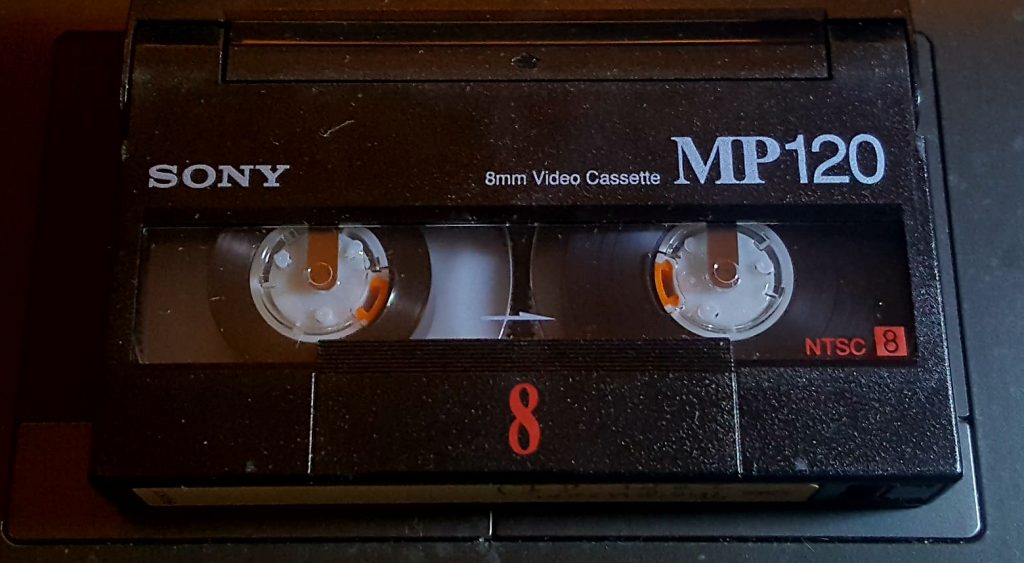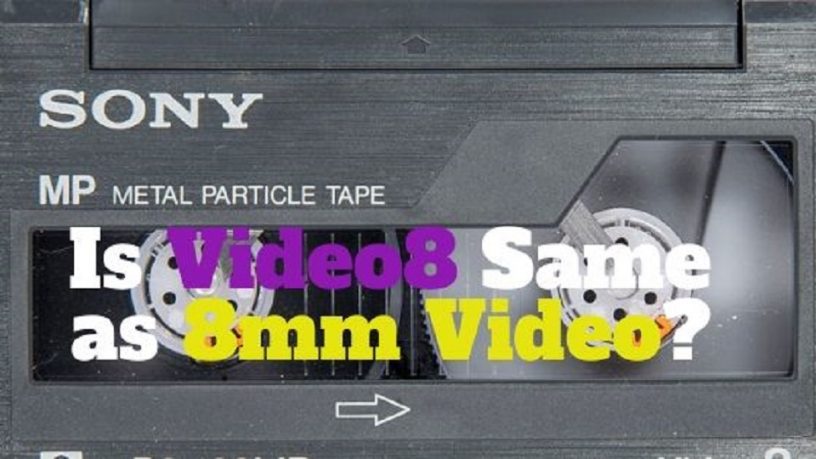Last updated on January 23rd, 2024 at 02:33 am
This Video8 wiki seeks to provide comprehensive information on Video8, a camcorder video format.
Video8 (1985 – 2000s)
Sony introduced the Video8 format in 1985. Video8 was the first 8mm tape format introduced by Sony. It was later to be followed with the Hi8 and Digital8 formats.
Before Sony introduced the Video8 format, there was already an 8mm video format introduced by Kodak.
KodaVision 2000
The first 8mm video camera recorder was the KodaVision 2000, introduced in 1984.
It was a self-contained unit that weighed about 5 pounds and used small 8-millimeter video cassettes.
The KodaVision 2000 had a number of features that made it popular, including:
- It was relatively compact and lightweight, making it more portable than other camcorders of the time.
- It was easy to use, with a simple point-and-shoot design.
- It offered good image quality for its time.
- It was relatively affordable.
With its release, home video went from film to electronic for the first time.
The KodaVision 2000 was a groundbreaking camcorder, but it was eventually overtaken by other formats, most notably VHS and Betamax. The demise of the KodaVision was due to a number of factors, including:
- Technical limitations: The KodaVision 2000 recorded 8mm video cassettes with shorter recording time and lower image quality than VHS or Betamax cassettes.
- Higher cost: KodaVision cassettes were also more expensive than VHS or Betamax cassettes.
- Limited market penetration: The KodaVision 2000 was only released in a few markets and was not as widely available as VHS or Betamax camcorders.
- Poor marketing: Kodak did not do a good job marketing the KodaVision 2000, and consumers were unaware of its advantages over other formats.
Kodak, however, failed to maintain its position as a pioneer in 8mm video, losing out to Sony.
Sony introduced the Video8 format, and it was called Handycam. The name Handycam was later used for Hi8 and Digital8 camcorders, too.
The word Handycam was used to differentiate it from Sony’s existing line of Betamax video cameras.
Handycam (Handy camera) emphasized the portable nature of the Video8 camera as it fits into the palm. It also referred to the ‘handy’ nature of the miniature 8mm tape that the camera or camcorder uses.
Video8 used the same technology as the 12mm Betamax format, though. As such, it was popularly called the ‘mini’ Betamax.

Video8 was positioned to rival the VHS-C format developed by JVC.
Video8 has a resolution of 240 lines, about that of VHS.
The main drawback of Video8 is that it generally can’t be played back over a VHS player with an adapter.
However, VHS-8mm Combo VCRs allowed 8mm video to be transferred to VHS for viewing on VHS VCRs.
VHS-C, on the other hand, could be played back with a VHS-C to VHS adapter.
Is Video8 the Same as 8mm?
Video8 can be said to be the same as 8mm.
8mm here refers to the width of the tape.
Video8 has a tape width of 8mm.
Video8 is not the only tape with a width of 8mm. Hi-8 and Digital8 have the same width.
However, in differentiating between Hi-8 and Digital8, Video8 is often called 8mm.
Check out the video below to learn the difference between Video8 and Hi8.
How Can I Play My Video8 Tapes?
You can play your Video8 tapes through your Video8, Hi8, or Digital8 camcorder/VCR or tape deck.
There are no adapters to play your Video8 tapes on a VHS VCR as it’s available for VHS-C tapes.



